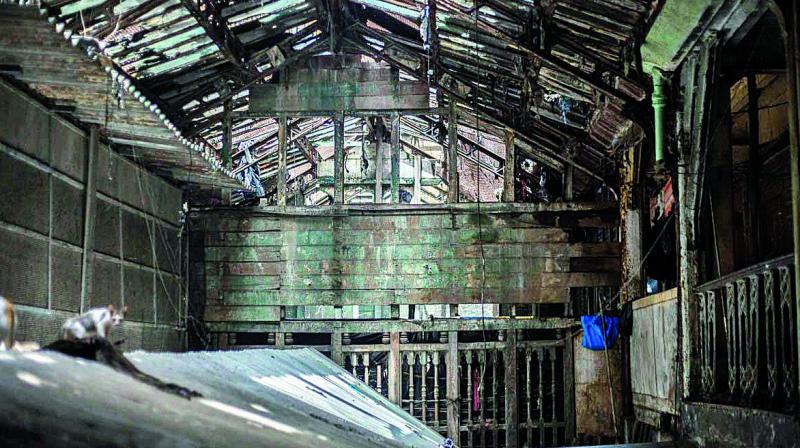The old world charm of Watson's Hotel
Bhavika Thakkar visits city’s first luxury hotel to only find out that it is now a crumbling, dilapidated structure.
I’m obsessed with all things vintage. They have a past, a story attached to them that adds character and depth and makes them almost animated. Unsurprisingly, I constantly seek out stories about Mumbai’s heritage structures, crumbling or otherwise. Watson’s Hotel definitely falls into the crumbling category.
My tryst with this building began when I was in film school, learning about the genius of the Lumiere brothers, who introduced the world to the idea of the moving image. It was at the erstwhile Watson’s Hotel that they debuted their Cinématographe invention in India just a week after Paris. That's all it took to get me hooked, and I discovered the hotel’s original European connection.
Watson’s Hotel, or Esplanade Mansion as it is currently known, is the dilapidated building on the corner opposite the University of Mumbai building at Kala Ghoda. It’s the grey building with sections of it falling off that makes you wonder how it still manages to remain upright. While it lies in ruins today, the building has an illustrious past.
Built in the 1860s, Watson’s Hotel was Bombay’s – and possibly India's – introduction to luxury hotels. Its original owner, John Watson, was a textile merchant who migrated to Bombay from London in 1853 to expand his business at a time when the city was flourishing as a trading hub. His business did exceptionally well, and within 10 years Watson made enough money to buy the land where the hotel stands today. A defining characteristic of this building is that it is made entirely out of cast iron. These cast iron pillars and other components were fabricated in England and then shipped to Bombay to be assembled into the hotel’s structure. In its heydey the hotel was five stories tall and had rooms built around the atrium.
Sadly, after Watson’s death, the hotel became less popular and lost favour to Colaba’sTaj Mahal Palace Hotel. After changing hands through a number of owners, the hotel was closed in the 1960s and divided into smaller sections, which were leased out as residential and office spaces.That was the end of Watson’s Hotel’s glorious run that boasted the likes of Mark Twain as its patrons.
The building is the country’s earliest surviving cast iron structure, but it’s not much of a structure anymore. While several other heritage structures, monuments and statues have been restored and preserved, the same can’t be said about Esplanade Mansion. Lack of funds and conflicts between the tenants and landlord have led to the absolute decay of the building. Out of sheer curiosity, I went in to see if there are any remnants of its resplendent past and, sadly, came away utterly dismayed. The building is worse on the inside than on the outside. Theatrium is being used as a garbage dump, and it’s a sheer miracle that no serious mishap has occurred indoors.
We may have lost out on a slice of Mumbai’s history, but we still have the words Mark Twain wrote about the crows he saw from his window. And while it’s a bit tricky, if you look hard enough you can still see the “W” on the grills of the building’s balcony – a tiny reminder of its tenacity.
— By arrangement with TheCityStory.com




















